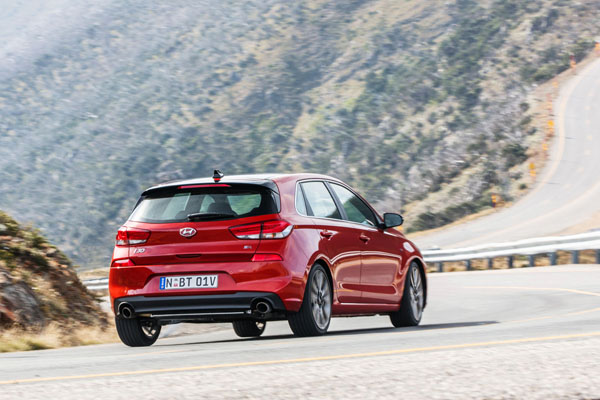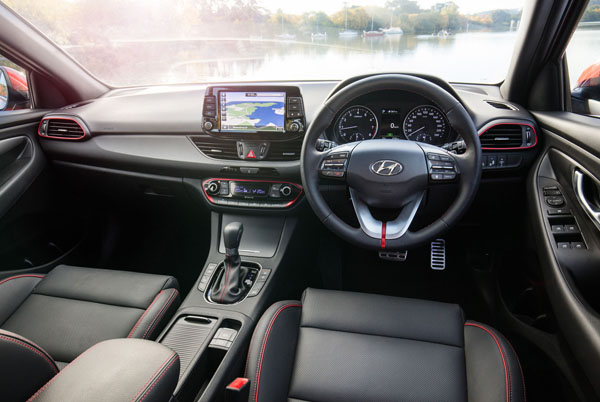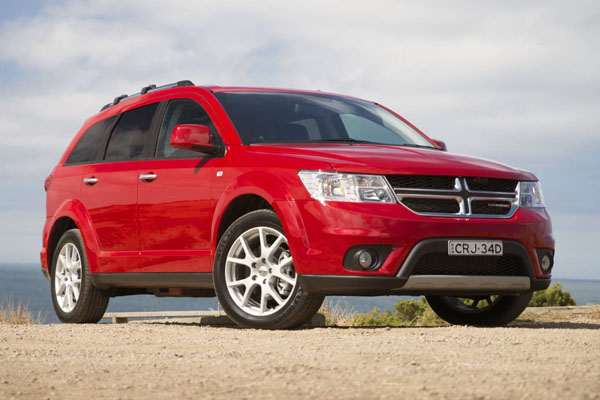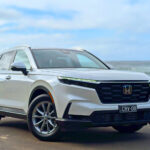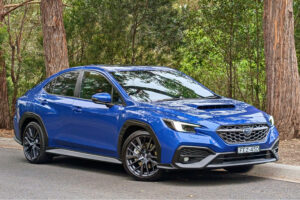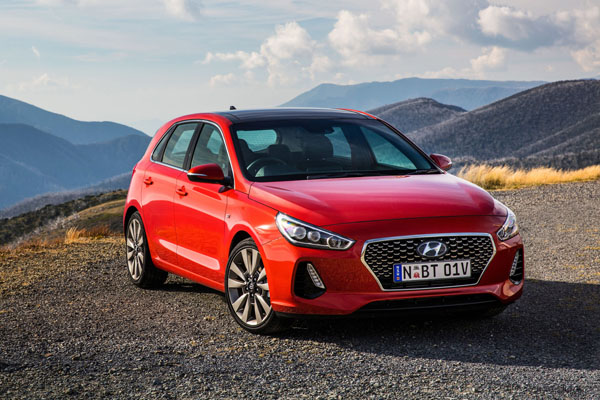
The new Hyundai i30 has already been ruffling a few feathers. The South Korean giant has positioned the small hatch as a premium offering that is stylish, better equipped and the most technologically savvy i30 yet.
Hyundai i30 is already a firm favourite in Australia with 30 per cent of all i30s manufactured globally being sold here. It fights well alongside the Toyota Corolla, Mazda 3, Volkswagen Golf and other, smaller, players.
Potential buyers will be spoilt for choice. The new i30 is offered in four variants, with two transmissions and with petrol or diesel power.
STYLING
A longer sleeker bonnet, a new-look grille and a defined shoulder line makes clear Hyundai’s intention to give the i30 a more premium look.
The maturity in design is there to see in the interior as well. There are better quality plastics and textures. Apparently simple things like the repetition of shapes in the air vents, door handles, wheel controls and even the side mirrors add a feeling of cohesion.
While we may not be talking all-in luxury here, such is the intent that I had to stop and check that it was in fact the entry-level Active. As well as 16-inch alloys, digital radio, and reversing camera, this i30 also has auto wipers and headlights, tyre pressure monitor and LED daytime running lights.
The instruments are simple but effective, the infotainment system perched front and centre is easy to use and storage options about par for the course.
There are drinkholders front and rear, a centre console box with a lid and a largish open space at the bottom of the console that has a USB input and two 12V sockets. The door pockets are deep and segmented but in the front at least the protruding speaker covers prevents you from carrying taller water bottles at your side.
All in all it is a nice place to be except perhaps for the space holding buttons around the gear stick which offer a hint of what you may be missing by not springing for the higher-specced variants.
No air vents back there in the entry-level model though… oh, well.
At 395-litres, the boot is thereabouts with competitors, and grows to a very useful 1300 litres when the 60:40 split seats are lowered.
INFOTAINMENT
An 8.0-inch colour touchscreen surrounded by one-touch menu buttons and perched in the middle of the console can be found across the i30 range.
It is easy to navigate, has an excellent response time and up-to-date graphics. You also get Bluetooth capability, sat nav, Apple CarPlay and Android Auto connectivity.
ENGINE AND TRANSMISSION
The 2.0-litre direct-injection four-cylinder petrol engine replaces the old 1.8-litre offering and delivers 120kW of power and 203Nm of torque.
It is paired with either a seven-speed dual-clutch automated manual, as our test car was, or a six-speed manual.
You also have the choice of the 1.6-litre four-cylinder turbo-diesel that shares the same transmission choices as the auto but is good for 100kW and a lusty 300Nm.
SAFETY
Like the rest of the i30 the Active comes with five-star ANCAP thanks to tight safety package that includes airbags, front, side and back.
On the active side, there’s stability and traction control, ABS with EBD, reverse camera with dynamic guidelines and reverse parking sensors.
Hyundai’s SmartSense, available in mid and top-range models, includes, blind spot monitoring, driver fatigue detection lane change assist, autonomous emergency braking, rear cross traffic alert and smart cruise control. That package is likely to be available for the i30 Active later this year.
There are IsoFix points in the outboard seats, and top tethers to help keep your precious cargo safe.
DRIVING
Space is always at a premium in smaller cars, particularly hatches, but this i30 is longer and wider than before, offering more comfort where it counts.
Seats in the Active feature fabric trim but are nicely cushioned and supportive. A tad more side bolstering wouldn’t go astray and they could be wider at the shoulders but those are not sticking points.
While Hyundai i30 can ably accommodate a couple of adults in the back, it is better suited to kiddies especially for longer trips.
The driving position is comfortable and all-round vision is excellent.
That this car’s suspension and steering have been tuned for Australian conditions is instantly noticeable, with the i30 offering a relaxed, cushioned ride over all but the most challenging of surfaces. It is confident in its ability, poised through corners and is slow to startle even without advance warning of quick changes of direction. Braking is progressive.
Tyre noise can be intrusive at times, particularly on coarse-chip.
The electric steering is much improved over the previous model, meaning you are not busy with it all the time.
In the city and suburbs where it will do most of its work, the i30 is nimble and self-assured and easily manoeuvred into tight spaces.
To be honest, it could do with an added boost of power or a bit more grunt at mid-range where we found that it often needed more focused urging but once at speed it is happy to take flight.
Claimed fuel consumption is 7.4 L/100km for the automatic. Our figures at more a litre over this are a bit steep for a small car.
WARRANTY
Warranty is five years unlimited kilometres with the first service free (1500km) and free 12 months roadside assist. Service intervals are 15,000km or 12months with fixed-price costs for the first five years ($1525).
SUMMING UP
The i30 has been a keen warrior for Hyundai, particularly in Australia and the company is expecting even greater things from this new model.
It does have the more premium feel Hyundai promised, it is spacious, has good connectivity and offers a comfortable confident drive.
However, the entry-level Active would be all the more attractive with the full safety package.
AT A GLANCE
Hyundai i30 Active
Price: from $23,250 (plus on-road costs)
Engine: 2.0-litre four-cylinder petrol, FWD
Power: 120kW
Torque: 203Nm
Transmission: Seven-speed dual-clutch auto
Fuel use: 7.4L/100km combined
What we liked:
Ride and refinement
Infotainment update
Fit and finish
What we didn’t like:
No backseat air vents in entry-level
No added safety package at this time
Lack of mid-range power




